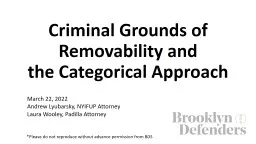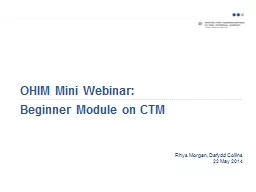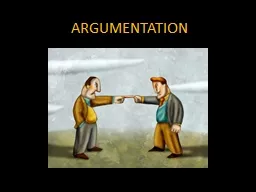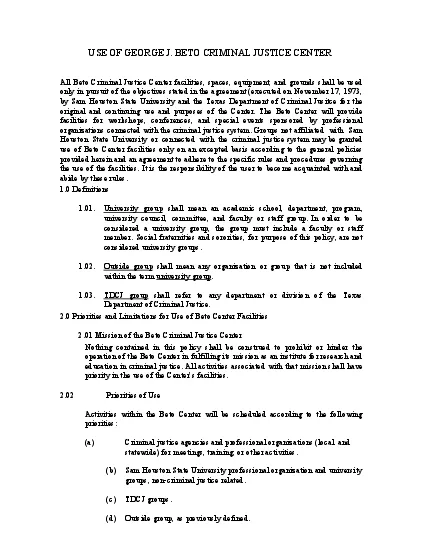PPT-Criminal Grounds of Removability and
Author : Pirateking | Published Date : 2022-08-04
the Categorical Approach March 22 2022 Andrew Lyubarsky NYIFUP Attorney Laura Wooley Padilla Attorney Please do not reproduce without advance permission from BDS
Presentation Embed Code
Download Presentation
Download Presentation The PPT/PDF document "Criminal Grounds of Removability and" is the property of its rightful owner. Permission is granted to download and print the materials on this website for personal, non-commercial use only, and to display it on your personal computer provided you do not modify the materials and that you retain all copyright notices contained in the materials. By downloading content from our website, you accept the terms of this agreement.
Criminal Grounds of Removability and: Transcript
Download Rules Of Document
"Criminal Grounds of Removability and"The content belongs to its owner. You may download and print it for personal use, without modification, and keep all copyright notices. By downloading, you agree to these terms.
Related Documents














